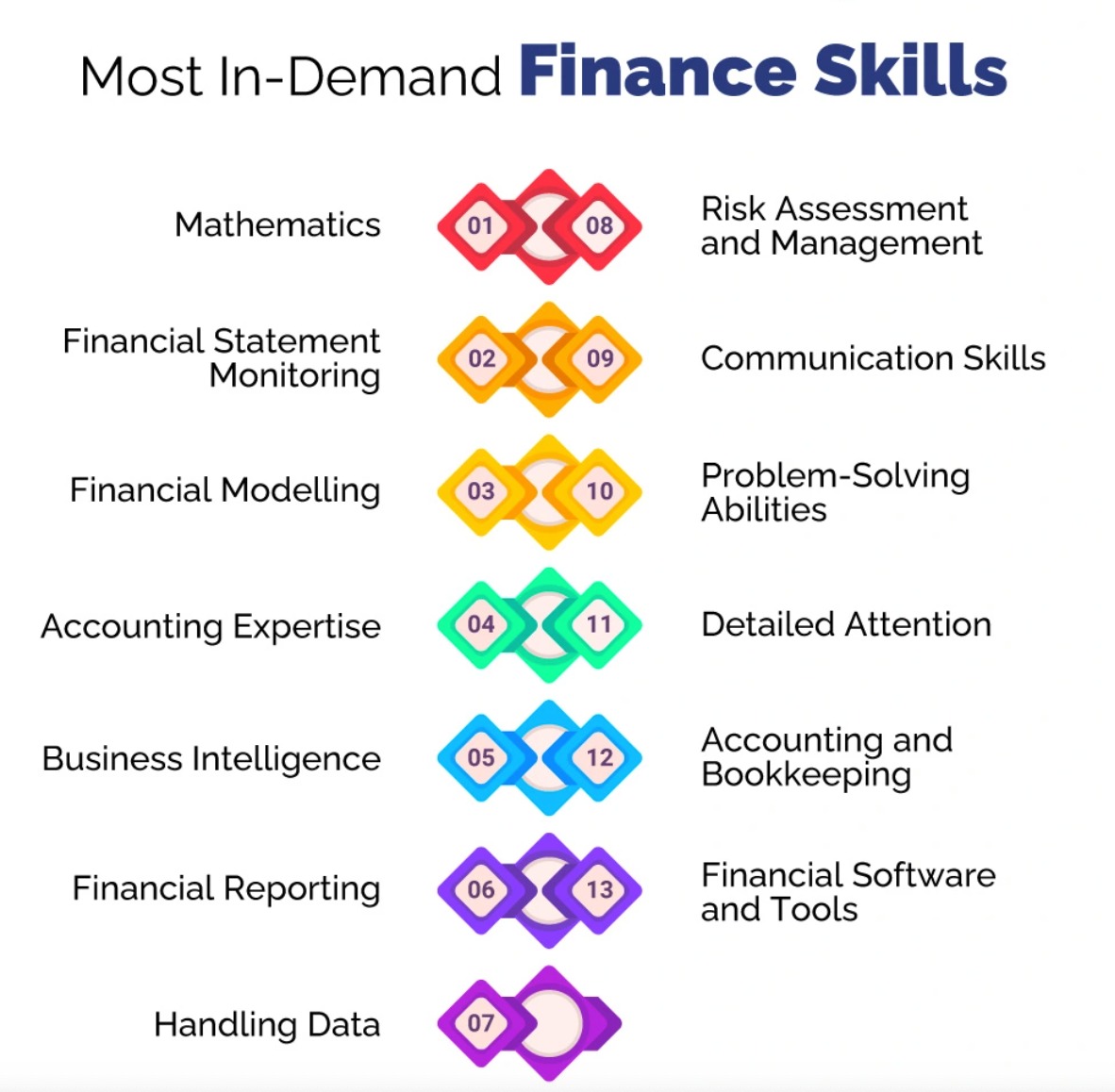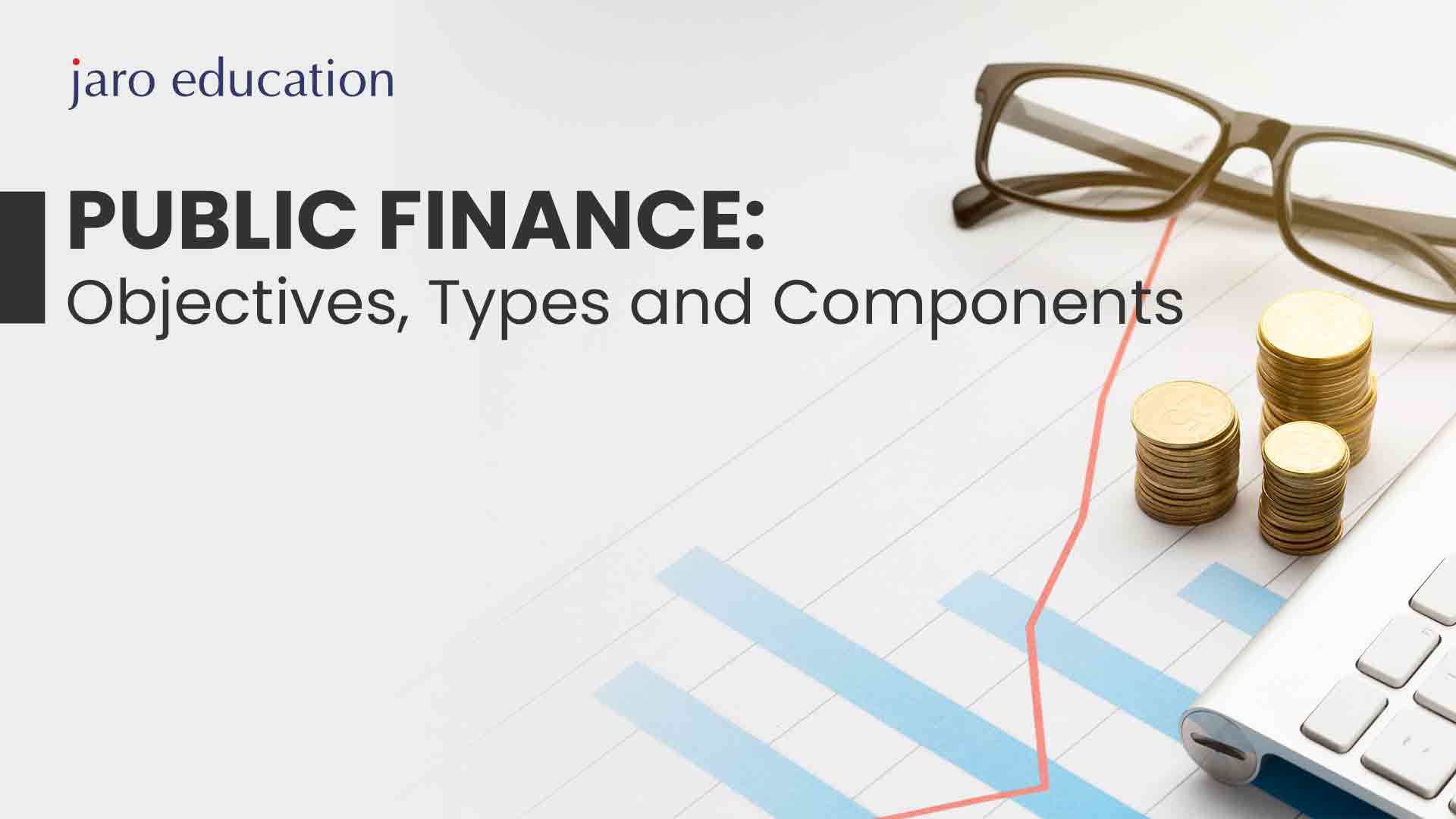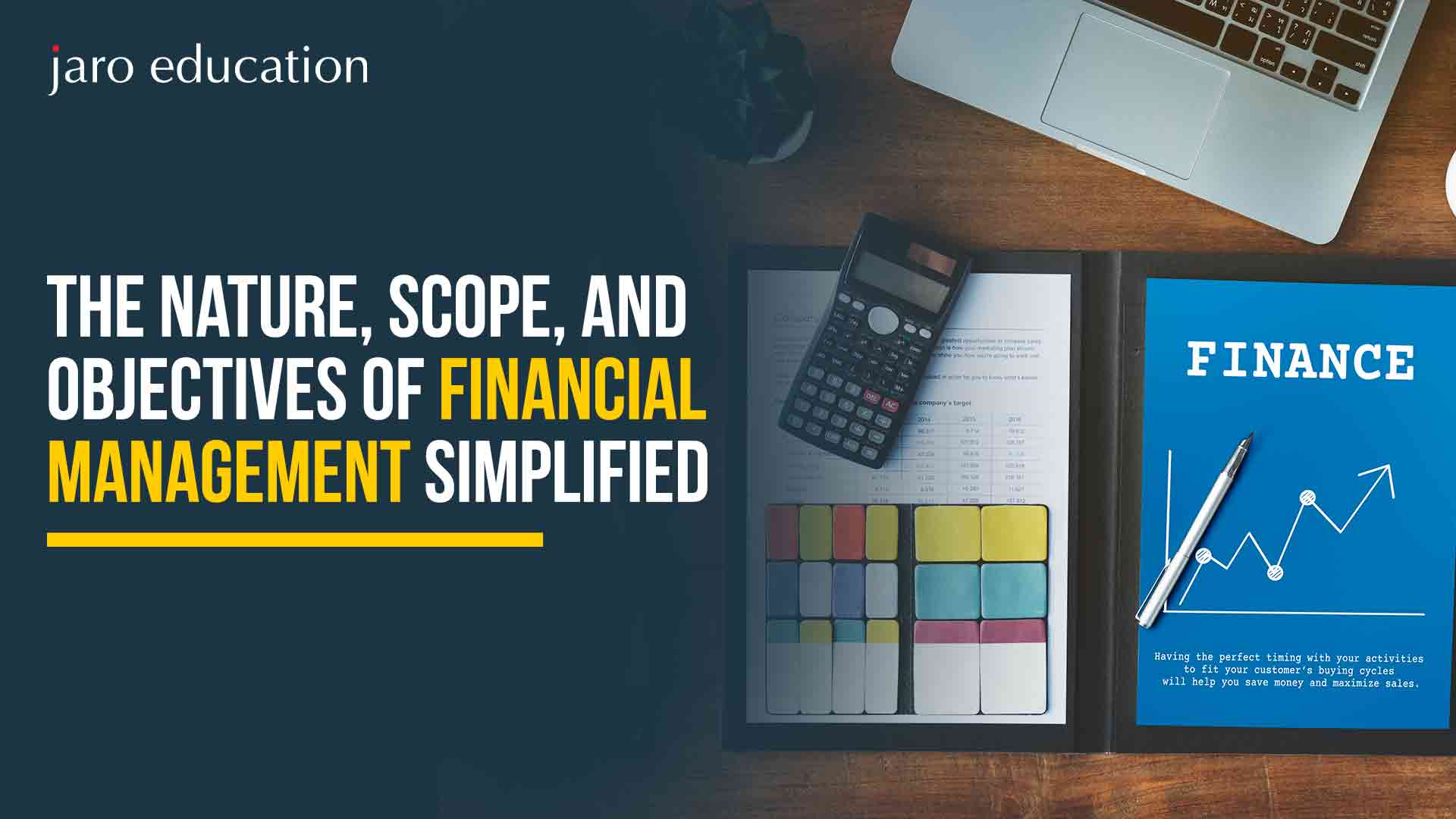20 Fun Finance Project Topics [For Freshers & Experienced]
Table of Contents
![20-Fun-Finance-Project-Topics-[For-Freshers-&-Experienced]](https://jaro-website.s3.ap-south-1.amazonaws.com/2024/07/20-Fun-Finance-Project-Topics-For-Freshers-Experienced.jpg)
- jaro education
- 18, July 2024
- 9:00 am
Finance project topics are not just educational; they’re stepping stones for real-world success in finance. They blend theory with hands-on learning, helping both students and professionals apply their knowledge practically. These projects foster critical skills, deepen financial understanding, and offer invaluable experience directly applicable to careers.
Engaging in finance projects sharpens analytical abilities, boosts financial literacy, and cultivates informed decision-making. They cover diverse areas like personal budgeting, investment analysis, and corporate finance, even exploring cutting-edge financial technology. By tackling these projects, individuals forge a robust foundation of expertise that’s pivotal for future endeavors.
Our blog features 20 exciting finance related project topics suitable for beginners and seasoned professionals alike. These projects promise not just education, but also enjoyment, offering a variety of topics and activities to deepen your financial insights and hone practical skills. Whether you’re a student looking to enrich your learning journey or a professional aiming to expand your expertise, these ideas will inspire and challenge you on your finance journey.

*finprov.com
1. Budgeting and Personal Finance Management
Project Description: Creating a personal budgeting tool involves designing a system that helps individuals track their income, expenses, and savings. This project aims to develop a tool that categorizes expenses, monitors income, and sets financial goals to provide a comprehensive overview of personal financial health, making it a practical and engaging choice for those interested in hands-on Finance project topics.
Tools and Software:
- Excel: Utilize Excel’s built-in functions and templates for a customizable budgeting tool.
- Google Sheets: Use Google Sheets for real-time collaboration and versatile functions.
- Personal Finance Apps: Explore apps like Mint, YNAB (You Need A Budget), or PocketGuard to understand and incorporate similar features.
Key Learning Outcomes:
- Budgeting Skills: Create a realistic budget by analyzing income, expenses, setting financial goals, and making necessary adjustments.
- Expense Tracking: Categorize and monitor expenses to gain insights into spending habits and identify potential savings areas.
- Financial Planning: Develop a comprehensive financial plan that includes budgeting, saving, and goal-setting for long-term financial stability.
2. Investment Portfolio Analysis
Project Description: Analyzing and creating a diversified investment portfolio involves researching and selecting a mix of assets to balance risk and return. Finance project topics aim to teach the principles of investment, asset allocation, and portfolio management.
Tools and Software:
- Online Trading Platforms: Use platforms like Robinhood, E*TRADE, or TD Ameritrade to research and track investments.
- Financial Analysis Tools: Utilize tools like Bloomberg Terminal, Yahoo Finance, or Morningstar for in-depth financial analysis and research.
Key Learning Outcomes:
- Understanding Asset Allocation: Learn how to distribute investments across various asset classes (stocks, bonds, real estate, etc.) to minimize risk and maximize returns.
- Risk Assessment: Evaluate the risk associated with different investment options and understand how to manage and mitigate these risks.
- Return on Investment: Analyze the performance of different assets and understand how to measure and optimize returns within a portfolio.
3. Financial Statement Analysis
Project Description: Analyzing the financial statements of a chosen company involves examining the balance sheet, income statement, and cash flow statement to assess the company’s financial health and performance. This project aims to develop skills in financial analysis and interpretation.
Tools and Software:
- Financial Databases: Use databases like Bloomberg, Reuters, or EDGAR for accessing company financial statements.
- Excel: Employ Excel for detailed financial analysis and ratio calculations.
Key Learning Outcomes:
- Ratio Analysis: Learn to calculate and interpret key financial ratios, such as liquidity ratios, profitability ratios, and solvency ratios.
- Understanding Financial Health: Assess the overall financial stability of a company by analyzing its financial statements and identifying trends.
- Performance Metrics: Understand and evaluate performance metrics to gauge a company’s operational efficiency and profitability.
4. Cryptocurrency Trading Simulation
Project Description: Simulating cryptocurrency trading and portfolio management involves creating and managing a portfolio of cryptocurrencies, using virtual trading platforms to practice trading strategies without real financial risk. This project aims to provide hands-on experience with cryptocurrency markets.
Tools and Software:
- Crypto Trading Platforms: Use platforms like Binance, Coinbase, or Kraken for researching and simulating trades.
- Simulators: Utilize cryptocurrency trading simulators or paper trading apps to practice trading strategies.
Key Learning Outcomes:
- Understanding Blockchain Technology: Gain a foundational understanding of blockchain technology and how it underpins cryptocurrencies.
- Trading Strategies: Develop and test various trading strategies, such as day trading, swing trading, and long-term holding.
- Market Trends: Learn to analyze and interpret market trends, price charts, and indicators to make informed trading decisions.
5. Credit Risk Assessment
Project Description: Developing a credit risk assessment model involves creating a system to evaluate the creditworthiness of borrowers. This project focuses on using statistical and machine learning tools to predict the likelihood of default and manage credit risk effectively.
Tools and Software:
- Statistical Software: Use software like R, SAS, or SPSS for statistical analysis.
- Machine Learning Tools: Utilize machine learning tools such as Python (with libraries like scikit-learn) or TensorFlow for building predictive models.
Key Learning Outcomes:
- Credit Scoring: Learn how to develop and implement credit scoring models to assess the risk profile of borrowers.
- Risk Management: Understand risk management principles and techniques to mitigate credit risk.
- Data Analysis: Gain expertise in data collection, cleaning, and analysis to build accurate and reliable credit risk models.
6. Financial Market Analysis
Project Description: Analyzing trends and patterns in financial markets involves studying various market indicators, economic data, and financial news to understand market behavior and predict future movements. This project aims to enhance skills in market analysis and economic interpretation, making it an excellent option for those exploring diverse and insightful Finance project topics.
Tools and Software:
- Bloomberg: Use the Bloomberg Terminal for comprehensive financial data and analytics.
- Reuters: Access Reuters for up-to-date financial news and market information.
- Financial News Sources: Utilize various financial news sources such as The Wall Street Journal, CNBC, or Financial Times.
Key Learning Outcomes:
- Market Analysis: Develop the ability to analyze financial markets, including stocks, bonds, commodities, and currencies.
- Economic Indicators: Understand and interpret key economic indicators such as GDP, inflation, unemployment rates, and interest rates.
- Trend Identification: Learn to identify and analyze market trends, patterns, and anomalies to make informed investment decisions.
7. Business Valuation
Project Description: Valuing a startup or established company involves determining its economic value using various valuation methods. This project focuses on applying different valuation techniques to assess a company’s worth accurately.
Tools and Software:
- Valuation Models: Use models like Discounted Cash Flow (DCF), Comparable Company Analysis, and Precedent Transactions.
- Excel: Utilize Excel for building and analyzing valuation models, performing calculations, and creating financial projections.
Key Learning Outcomes:
- Discounted Cash Flow: Learn to project future cash flows and discount them to present value using the appropriate discount rate.
- Comparable Company Analysis: Understand how to compare the target company with similar companies to derive its value based on market multiples.
- Precedent Transactions: Analyze past transactions of similar companies to establish a valuation benchmark.
8. Behavioral Finance Study
Project Description: Researching and analyzing behavioral finance concepts involves studying how psychological factors influence investor behavior and market outcomes. This project aims to explore biases, market anomalies, and the impact of human behavior on financial decisions, making it a compelling choice for those interested in innovative Finance project topics.
Tools and Software:
- Surveys: Design and distribute surveys to gather data on investor behavior and biases.
- Data Analysis Tools: Use tools like SPSS, R, or Python for analyzing survey data and identifying patterns.
Key Learning Outcomes:
- Understanding Investor Behavior: Gain insights into how cognitive biases and emotional factors affect investment decisions.
- Biases: Study common biases such as overconfidence, loss aversion, and herd behavior.
- Market Anomalies: Identify and analyze market anomalies that arise due to irrational behavior, such as bubbles and crashes.
9. Financial Modelling
Project Description: Building a financial model for a business scenario involves creating a detailed representation of a company’s financial performance. This project focuses on developing a model that includes revenue forecasting, cost analysis, and scenario planning to evaluate different business strategies.
Tools and Software:
- Excel: Utilize Excel for constructing financial models, performing calculations, and visualizing data.
- Financial Modeling Software: Use specialized software like Quantrix, Adaptive Insights, or Anaplan for more advanced modeling capabilities.
Key Learning Outcomes:
- Revenue Forecasting: Learn how to project future revenues based on historical data, market trends, and business strategies.
- Cost Analysis: Understand how to analyze and project costs, including fixed and variable expenses, to determine profitability.
- Scenario Planning: Develop skills in creating and analyzing different business scenarios to evaluate potential outcomes and make informed decisions.
10. Sustainable Finance Projects
Project Description: Developing projects focused on sustainable finance and ESG (Environmental, Social, and Governance) criteria involves creating financial strategies and investments that promote sustainability. This project aims to integrate ESG factors into financial analysis and decision-making processes.
Tools and Software:
- Sustainability Reporting Tools: Use tools like GRI Standards, SASB, or CDP for sustainability reporting and analysis.
- Financial Analysis Software: Employ software such as Bloomberg ESG Data Service, MSCI ESG Manager, or S&P Global for ESG data and analysis.
Key Learning Outcomes:
- Understanding ESG Factors: Gain insights into the importance of environmental, social, and governance factors in financial decision-making.
- Sustainable Investment Strategies: Learn to develop and implement investment strategies that align with ESG criteria, promoting long-term sustainability.
- Impact Assessment: Understand how to measure and report the impact of financial decisions on environmental and social outcomes
11. Tax Planning Strategies
Project Description: Creating tax planning strategies for individuals or businesses involves developing methods to minimize tax liability while ensuring compliance with tax regulations. This project focuses on understanding tax laws and leveraging them to create effective tax-saving strategies.
Tools and Software:
- Tax Preparation Software: Use software like TurboTax, H&R Block, or TaxAct for tax calculations and planning.
- Excel: Utilize Excel for organizing financial data, performing tax calculations, and creating tax planning models.
Key Learning Outcomes:
- Tax Regulations: Gain a comprehensive understanding of federal, state, and local tax laws and regulations.
- Tax-Saving Strategies: Learn various strategies to minimize tax liability, such as deductions, credits, and tax-advantaged accounts.
- Financial Planning: Develop skills in integrating tax planning with overall financial planning to optimize financial outcomes.
12. Fintech Innovations
Project Description: Researching and analyzing the impact of fintech innovations involves studying the latest technological advancements in the financial sector and their effects on traditional financial services. This project aims to explore how fintech is disrupting the market and integrating technology into financial processes.
Tools and Software:
- Fintech Platforms: Use platforms like PayPal, Square, or Stripe to understand their functionalities and market impact.
- Research Tools: Utilize research tools and databases such as Crunchbase, CB Insights, or financial news sources for gathering information on fintech developments.
Key Learning Outcomes:
- Understanding Fintech Developments: Gain insights into recent advancements in financial technology, including blockchain, artificial intelligence, and mobile payments.
- Market Disruption: Analyze how fintech innovations are disrupting traditional financial services and creating new market opportunities.
- Technology Integration: Explore how financial institutions enhance efficiency, security, and customer experience through integrating cutting-edge technologies into their operations. Discover the transformative impact of technology integration in finance!
13. Peer-to-Peer Lending Analysis
Project Description: Studying the peer-to-peer (P2P) lending market involves analyzing the operations, risks, and opportunities associated with this alternative form of finance. This project aims to provide a comprehensive understanding of how P2P lending platforms function and their impact on the financial market.
Tools and Software:
- P2P Lending Platforms: Use platforms like LendingClub, Prosper, or Funding Circle for practical insights.
- Financial Analysis Tools: Utilize tools such as Excel, R, or Python for data analysis and modeling.
Key Learning Outcomes:
- Alternative Finance: Understand the principles and mechanisms of P2P lending as an alternative to traditional banking.
- Lending Risk: Learn to assess and manage the risks associated with P2P lending, including credit risk and default rates.
- Market Opportunities: Identify the opportunities and challenges in the P2P lending market, including potential returns and market trends.
14. Cost-Benefit Analysis of Projects
Project Description: Conducting a cost-benefit analysis for a proposed project involves evaluating the financial implications of undertaking the project. This project focuses on quantifying the costs and benefits to determine the feasibility and profitability of the project.
Tools and Software:
- Excel: Use Excel for organizing data, performing calculations, and creating cost-benefit analysis models.
- Financial Analysis Software: Employ software like @RISK or Cost-Benefit Analysis Tools for more advanced analysis.
Key Learning Outcomes:
- Decision Making: Develop skills in making informed decisions based on the financial viability of a project.
- Project Evaluation: Learn to evaluate projects by comparing the expected benefits with the associated costs.
- Financial Impact Assessment: Understand how to assess the financial impact of projects on an organization’s overall performance.
15. Retirement Planning
Project Description: Developing a comprehensive retirement plan involves creating a strategy to ensure financial security during retirement. This project focuses on understanding the components of retirement planning, including savings, investments, and risk management, making it an excellent choice for those seeking practical and impactful Finance project topics.
Tools and Software:
- Retirement Planning Calculators: Use online tools or software like Vanguard Retirement Nest Egg Calculator or Fidelity Retirement Score.
- Excel: Utilize Excel for modeling retirement scenarios, calculating savings needs, and planning investments.
Key Learning Outcomes:
- Long-Term Financial Planning: Learn how to create a long-term financial plan that ensures sufficient retirement savings.
- Investment Strategies: Understand various investment options and strategies for growing retirement funds.
- Risk Management: Develop skills in managing risks associated with retirement planning, such as inflation, market volatility, and longevity risk.
16. Microfinance Impact Analysis
Project Description: Analyzing the impact of microfinance initiatives involves studying how microfinance programs affect economic development and financial inclusion. This project focuses on evaluating the social and economic outcomes of microfinance on individuals and communities, making it a valuable choice for those exploring impactful Finance project topics.
Tools and Software:
- Financial Analysis Tools: Use tools like Excel, R, or SPSS for data analysis and impact assessment.
- Research Databases: Utilize databases such as the World Bank, Microfinance Information Exchange (MIX), or academic journals for research.
Key Learning Outcomes:
- Microfinance Principles: Understand the principles and models of microfinance, including how they provide financial services to underserved populations.
- Social Impact: Learn to measure and analyze the social impact of microfinance initiatives on poverty reduction, employment, and economic development.
- Financial Inclusion: Gain insights into how microfinance promotes financial inclusion and empowers individuals economically.
17. Real Estate Investment Analysis
Project Description: Analyzing potential real estate investment opportunities involves evaluating various properties to determine their investment potential. This project focuses on assessing property values, market trends, and expected returns.
Tools and Software:
- Real Estate Valuation Tools: Use tools like Zillow, Redfin, or appraisal software for property valuation.
- Financial Analysis Software: Employ software such as Excel or ARGUS for detailed financial analysis and modeling.
Key Learning Outcomes:
- Property Valuation: Learn to assess the value of real estate properties using different valuation methods.
- Market Analysis: Understand market dynamics, trends, and factors that influence real estate prices.
- Investment Returns: Calculate expected returns on real estate investments, including rental income, appreciation, and overall ROI.
18. Stock Market Simulation
Project Description: Participating in a stock market simulation game involves using virtual trading platforms to practice buying and selling stocks without real financial risk. This project aims to develop trading strategies and portfolio management skills, making it an ideal choice for those seeking engaging Finance project topics.
Tools and Software:
- Stock Market Simulators: Use simulators like Investopedia Simulator, Wall Street Survivor, or MarketWatch Virtual Stock Exchange.
- Trading Platforms: Explore platforms like Robinhood, TD Ameritrade, or E*TRADE for real-world trading experience.
Key Learning Outcomes:
- Trading Strategies: Develop and test different trading strategies, such as day trading, swing trading, and value investing.
- Market Analysis: Learn to analyze stock market trends, price movements, and economic indicators.
- Portfolio Management: Understand how to build and manage a diversified investment portfolio to minimize risk and maximize returns.
19. Financial Literacy Programs
Project Description: Designing a financial literacy program for a target audience involves creating educational materials and a curriculum to teach financial concepts. This project aims to improve financial literacy and empower individuals with the knowledge to make informed financial decisions. It is an excellent choice for those exploring Finance project topics that focus on educational impact and financial empowerment.
Tools and Software:
- Educational Materials: Develop materials using resources like books, online courses, and financial websites.
- Presentation Tools: Use tools like PowerPoint, Canva, or Prezi for creating engaging presentations and educational content.
Key Learning Outcomes:
- Financial Education: Gain knowledge of key financial concepts, such as budgeting, saving, investing, and credit management.
- Curriculum Development: Learn to design a comprehensive curriculum that addresses the financial education needs of the target audience.
- Teaching Skills: Develop skills in effectively communicating financial concepts and engaging with learners.
20. Risk Management Strategies
Project Description: Developing risk management strategies for a business involves identifying potential risks and creating plans to mitigate them. This project focuses on understanding risk assessment and implementing strategies to ensure business continuity and financial stability. It is ideal for those looking for Finance project topics that delve into practical and impactful aspects of financial risk management
Tools and Software:
- Risk Assessment Tools: Use tools like RiskWatch, RiskWatch360, or ISO 31000 for risk assessment and management.
- Financial Software: Employ software such as Excel, MATLAB, or @RISK for quantitative risk analysis.
Key Learning Outcomes:
- Risk Identification: Learn to identify various types of risks, including financial, operational, strategic, and compliance risks.
- Mitigation Plans: Create plans to tackle identified risks and reduce their impact on the business.
- Financial Security: Learn how robust risk management enhances the financial stability and strength of a business.
Conclusion
Exploring finance project topics a unique chance to gain hands-on experience and develop crucial skills. These projects are invaluable for sharpening analytical abilities, improving decision-making skills, and applying classroom knowledge to real-world situations. Active participation in finance-related projects prepares individuals effectively for the complexities and demands of a career in finance.
Choosing a finance related project topics that matches personal interests and career goals adds enjoyment and fulfillment to the learning process. Whether diving into budgeting, investment analysis, or risk management, each project provides an opportunity to deepen expertise in specific financial areas, fostering a comprehensive understanding.
Engaging in finance project topics is a pivotal step towards a successful finance career. Consider further honing your skills through the Online BBA Programme at Manipal University Jaipur, designed to equip you with essential knowledge for excelling in finance.
The finance industry is dynamic, requiring continuous learning and adaptation. By staying involved in finance related project topics, you stay current with trends, technologies, and market shifts. This proactive approach not only boosts professional growth but also prepares you to navigate and thrive in the fast-paced financial landscape. Embrace the journey of finance project topics to equip yourself for success in finance’s ever-evolving world.











